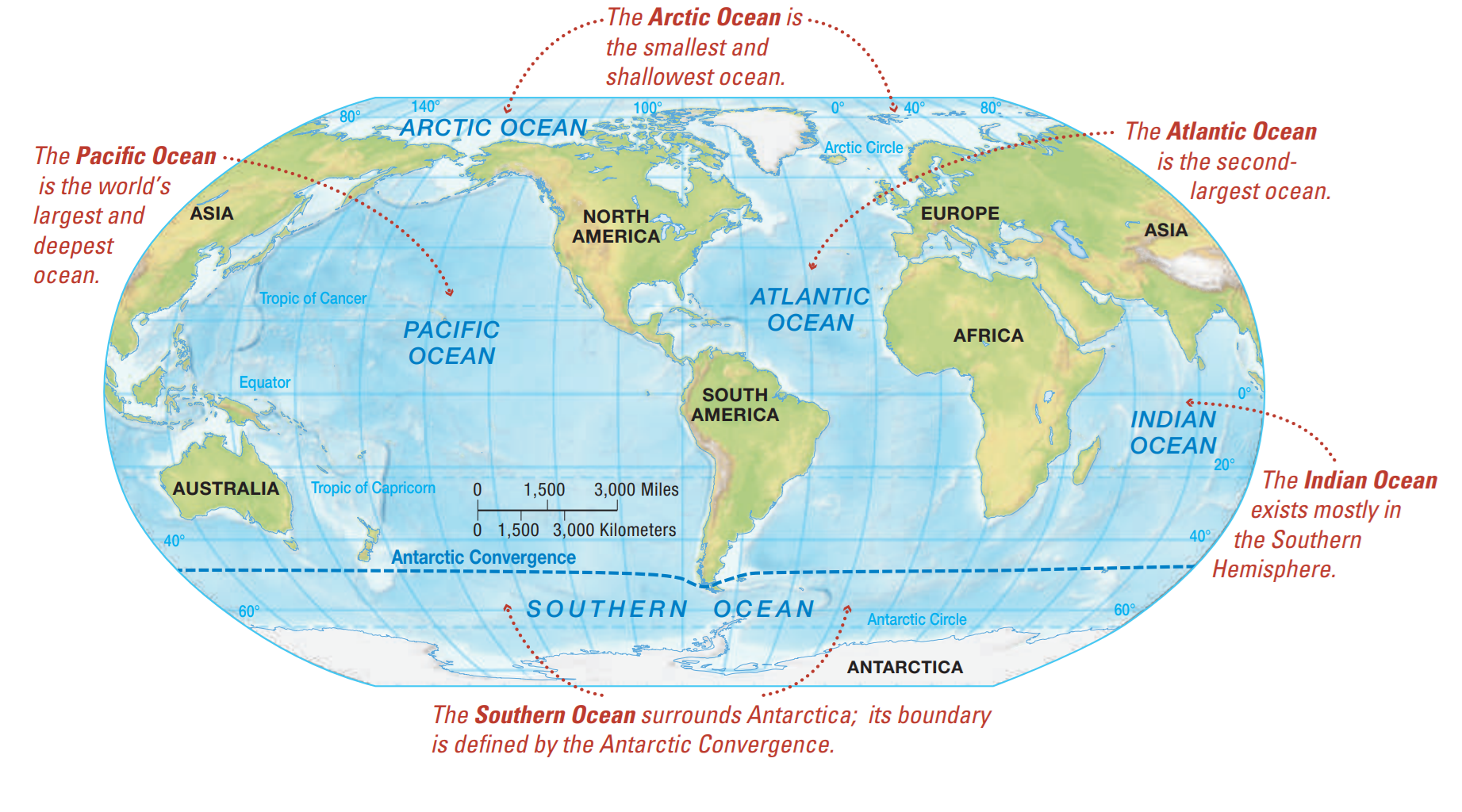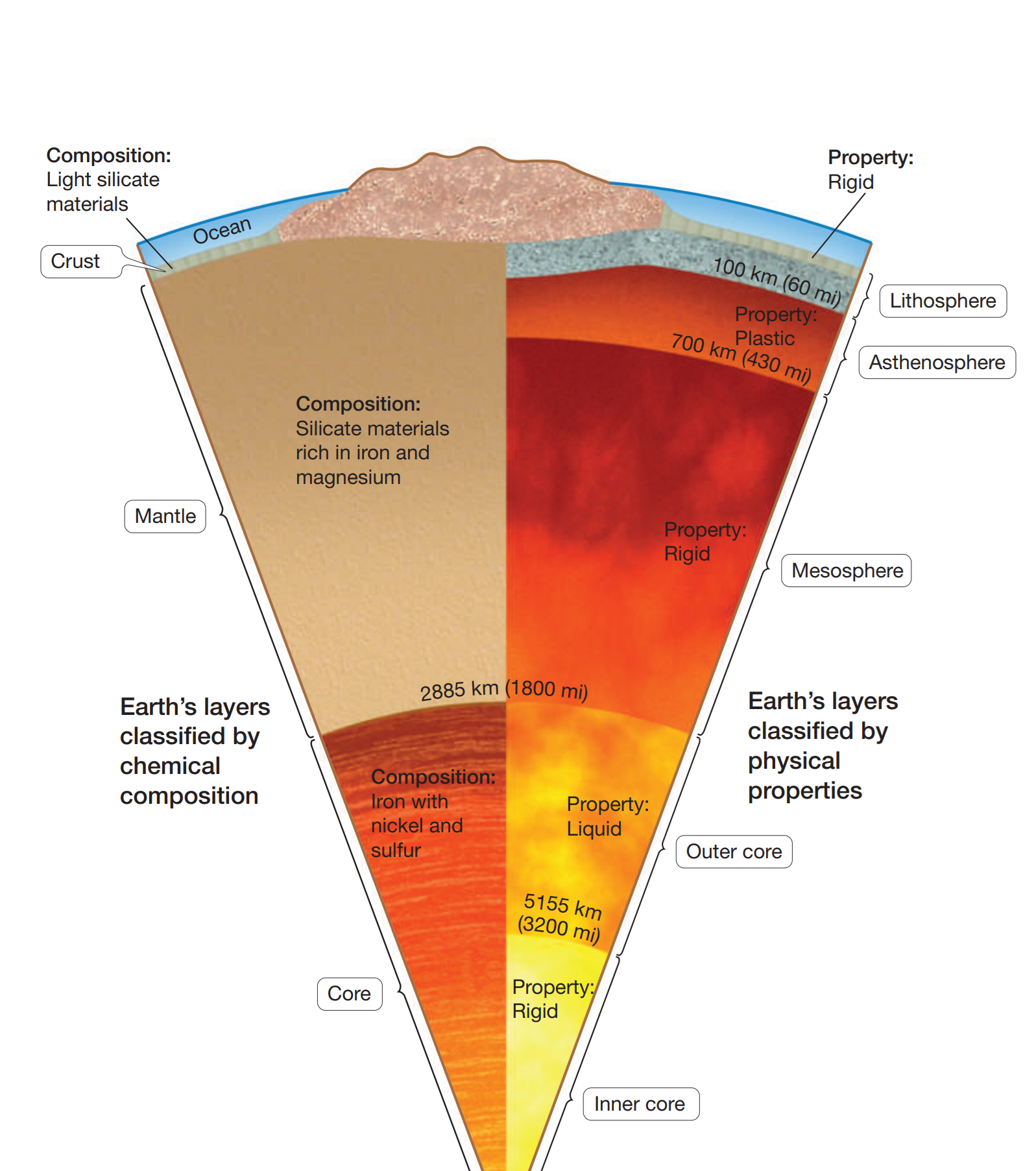Introduction to Planet Earth and the Ocean
Although approximately 70.8% of Earth’s total surface is enveloped by oceanic waters, the planet is named ‘Earth’ due to human habitation being primarily restricted to terrestrial regions. Oceans dominate Earth’s hydrosphere, comprising 97.2% of all water present on or adjacent to the surface. These vast water bodies are interconnected, forming a single, continuous aquatic expanse, which is why they are frequently termed the “world ocean.”
Four Principal Oceans and an Additional One
Based on the configuration of ocean basins and the spatial arrangement of continents, the world ocean is categorized into four primary oceans, along with one more.

Pacific Ocean
The Pacific Ocean represents the largest oceanic division, encompassing 50.1% of the planet’s aquatic surface. It spans over one-third of Earth’s entire surface area. Its average depth is approximately 3940 meters.
Atlantic Ocean
The Atlantic Ocean constitutes nearly half the expanse of the Pacific and functions as a divide between the Old World (comprising Europe, Asia, and Africa) and the New World (America). Its mean depth is 3844 meters.
Indian Ocean
Slightly smaller than the Atlantic, the Indian Ocean is situated predominantly in the Southern Hemisphere. Its average depth is 3840 meters.
Arctic Ocean
The Arctic Ocean is about 7% the size of the Pacific and is characterized by a perennial ice layer of several meters in thickness. The mean depth is 1117 meters.
Antarctic Ocean
Located adjacent to the Antarctic continent, the Antarctic Ocean is essentially the southern extension of the Pacific, Atlantic, and Indian Oceans beyond 60° South latitude.
Ocean Vs Sea
A sea is technically distinguished by the following attributes: a. Smaller and shallower than oceans; b. Composed of saltwater; c. Partially enclosed by landmasses; d. Directly connected to the world ocean. If oceans are subdivided and certain basins, such as the Pacific and Atlantic, are split along the equator, the classification expands to include:
- North Pacific Ocean
- South Pacific Ocean
- North Atlantic Ocean
- South Atlantic Ocean
- Indian Ocean
- Arctic Ocean
- Antarctic Ocean
Sea Vs Continents
The mean depth of the global ocean is 3729 meters, revealing the existence of extremely deep regions that counterbalance shallower coastal areas. The deepest known point is the Challenger Deep within the Mariana Trench in the Pacific Ocean, measuring 11,022 meters beneath sea level. In contrast, the average elevation of continental landmasses is a mere 840 meters. The world’s highest mountain, Mount Everest, rises to 8850 meters. However, the tallest mountain measured from base to summit is Mauna Kea in Hawaii, totaling 9632 meters (including 4206 meters above mean sea level and 5426 meters below). Hence, no mountain surpasses the Mariana Trench in vertical scale.
- Mount Everest – 8850 meters
- Average Land Elevation – 840 meters
- Average Ocean Depth – 3729 meters
- Mariana Trench – 11,022 meters
The period from 1492 to 1522 is designated the “Age of Discovery“, during which European explorers identified the continents of North and South America.
Proto-Earth
The initial form of the Earth, referred to as Proto-Earth, emerged from a massive gaseous cloud primarily composed of hydrogen (H₂) and helium (He), as per the nebular hypothesis. Proto-Earth was larger and exhibited homogeneous composition. Over time, denser elements migrated towards the center, altering its internal configuration. In its formative phase, the planet endured frequent meteorite bombardments. Notably, the Moon is believed to have formed after a cataclysmic impact with a Mars-sized body named Theia during the Hadean Eon, approximately 4.5 billion years ago. Simultaneously, the Sun initiated energy emission via nuclear fusion, wherein hydrogen atoms fused into helium, releasing immense thermal energy at temperatures in the tens of millions of degrees Celsius. The resulting intense solar radiation expelled the original H₂ and He atmosphere from Proto-Earth. Additionally, radioactive decay in the planet’s core generated heat, prompting a gradual planetary contraction. Eventually, the surface became molten, facilitating gravitational differentiation—the separation of elements by density. This density stratification led to the aggregation of high-density materials like iron and nickel in the core, while progressively lighter materials formed concentric layers outward.
Internal Structure of Earth: Chemical Composition and Physical Properties

Chemically, Earth comprises three essential layers: the crust, mantle, and core. Based on physical characteristics, the Earth is segmented as follows:
- Surface: 100 km
- Asthenosphere extends to: 700 km
- Mesosphere reaches down to: 2885 km
- Total Radius: 6371 km
Lithosphere, Asthenosphere, Mesosphere, Outer Core, Inner Core
Lithosphere: Composed of the crust and upper mantle; extends to 100 km.
Asthenosphere: Lies beneath the lithosphere, spanning to 700 km.
Mesosphere: Includes the middle and lower mantle.
Oceanic Crust vs. Continental Crust
| Oceanic Crust | Continental Crust |
|---|---|
| Composed of dark-colored basalt | Composed of light-colored granite |
| Average density is 3 g/cm³ | Average density is 2.79 g/cm³ |
| Thickness ranges from 5 to 10 km, extremely thin beneath trenches | Thickness averages 35 km, reaching up to 60 km under mountainous regions |
| Contains magnetite, hence exhibits greater magnetic properties | Lacks magnetite, resulting in lower magnetism compared to oceanic crust |